Related Research Articles

Georges Braque was a major 20th-century French painter, collagist, draughtsman, printmaker and sculptor. His most notable contributions were in his alliance with Fauvism from 1905, and the role he played in the development of Cubism. Braque's work between 1908 and 1912 is closely associated with that of his colleague Pablo Picasso. Their respective Cubist works were indistinguishable for many years, yet the quiet nature of Braque was partially eclipsed by the fame and notoriety of Picasso.

Monochromatic painting has been an important component of avant-garde visual art throughout the 20th century and into the 21st century. Painters have created the exploration of one color, examining values changing across a surface, texture, and nuance, expressing a wide variety of emotions, intentions, and meanings in many different forms. From geometric precision to expressionism, the monochrome has proved to be a durable idiom in Contemporary art.

Orphism or Orphic Cubism, a term coined by the French poet Guillaume Apollinaire in 1912, was an offshoot of Cubism that focused on pure abstraction and bright colors, influenced by Fauvism, the theoretical writings of Paul Signac, Charles Henry and the dye chemist Michel Eugène Chevreul. This movement, perceived as key in the transition from Cubism to Abstract art, was pioneered by František Kupka, Robert Delaunay and Sonia Delaunay, who relaunched the use of color during the monochromatic phase of Cubism. The meaning of the term Orphism was elusive when it first appeared and remains to some extent vague.
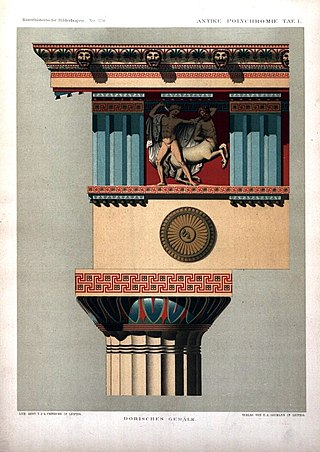
Polychrome is the "practice of decorating architectural elements, sculpture, etc., in a variety of colors." The term is used to refer to certain styles of architecture, pottery or sculpture in multiple colors.
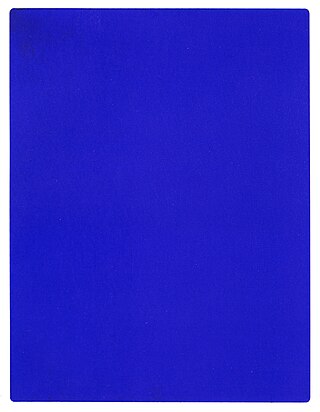
International Klein Blue (IKB) is a deep blue hue first mixed by the French artist Yves Klein. IKB's visual impact comes from its heavy reliance on ultramarine, as well as Klein's often thick and textured application of paint to canvas.
Paul Jenkins was an American abstract expressionist painter.
Rudolf Stingel is an artist based in New York City.

Painting is the practice of applying paint, pigment, color or other medium to a solid surface. The medium is commonly applied to the base with a brush, but other implements, such as knives, sponges, and airbrushes, can be used.
Zane Lewis is an American visual artist based in Brooklyn, New York. His abstract paintings and sculptures reference color field painting, pointillism, phenomenology, and minimalism. And have been stylistically referred to as 'psychedelic minimalism'.
Adriana Varejão is a Brazilian artist. She works in various disciplines including painting, drawing, sculpture, installation and photography. She was an artist-in-resident at the Isabella Stewart Gardner Museum in 2004. Varejão lives and works in Rio de Janeiro.

The Valpinçon Bather is an 1808 painting by the French Neoclassical artist Jean-Auguste-Dominique Ingres (1780–1867), held in the Louvre since 1879. Painted while the artist was studying at the French Academy in Rome, it was originally titled Seated Woman but later became known after one of its nineteenth-century owners.
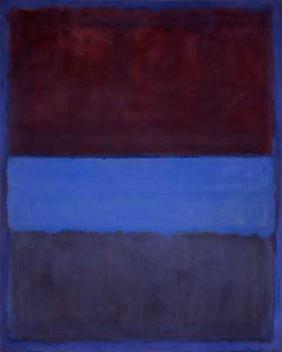
No. 61 is a 1953 painting by the Russian-American Abstract expressionist artist Mark Rothko. The work was first exhibited at the Museum of Modern Art, New York in 1961 but is now in the collection of the Museum of Contemporary Art, Los Angeles. Similar to Rothko's other works from this period, No. 61 consists of large expanses of color delineated by uneven, hazy shades. The Rust and Blue painting was a part of the Color Field Movement as No. 61 relies on subtle tonal values that are often variations of a monochromatic hue. Rust and Blue also uses layered coloring to enrich the hues in the painting, a quality the artist Mark Rothko described as "inner light". Rothko painted in such a way that at times paint can be seen flowing upward across the surface. This illusion can be seen in No. 61 since Rothko inverted the painting toward the final stages of his work.

Lightpainting is an art form developed by artist Stephen Knapp and introduced in 2002. Lightpainting is not to be confused with light painting, the latter of which is a photographic process recording traces of light on film or digital media to create images that must be reproduced in printed or transparency form. Lightpainting uses white light projected in space through specially coated glass that breaks the light into bands of color, producing optically complex virtual 3D images that sit at the intersection of painting and sculpture. Lightpaintings can take the form of moveable wall-mounted panels but the most spectacular effects are achieved in large-scale architectural installations. Layers of metallic coating are applied to glass pieces to refract and reflect colors, which becomes the palette to be used as pure chroma or mixed into a wide spectrum of colors. Glass is cut into various sizes and shapes that determine planes of color and other elements that can be used much as in traditional painting or sculpture.

Light and Space denotes a loosely affiliated art movement related to op art, minimalism and geometric abstraction originating in Southern California in the 1960s and influenced by John McLaughlin. It is characterized by a focus on perceptual phenomena, such as light, volume and scale, and the use of materials such as glass, neon, fluorescent lights, resin and cast acrylic, often forming installations conditioned by the work's surroundings. Whether by directing the flow of natural light, embedding artificial light within objects or architecture, or by playing with light through the use of transparent, translucent or reflective materials, Light and Space artists make the spectator's experience of light and other sensory phenomena under specific conditions the focus of their work. From the movement's inception, artists were incorporating into their work the latest technologies of the Southern California-based engineering and aerospace industries to develop sensuous, light-filled objects. Turrell, who has spread the movement worldwide, summed up its philosophy in saying, "We eat light, drink it in through our skins."
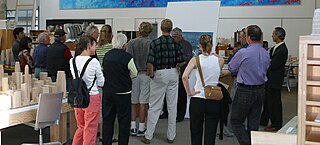
Peter Alexander was an American artist who was part of the Light and Space artistic movement in southern California in the 1960s. He is notable for his resin sculptures from the 1960s and 1970s.
Brion Nuda Rosch is an American visual artist. He is based in San Francisco, California.
Eric Orr (1939–1998) is an American artist who lived and worked in Venice, California from 1965 to 1998. Before moving to Los Angeles in 1965, Orr was a civil rights worker in Mississippi. A key figure of the Light and Space movement, Orr developed alongside Southern California conceptual art and created perceptual-based installations commonly associated with Light and Space art. Orr's work spanned a variety of artistic practices (including installation art, sculpture, painting, and performance art that challenged the definition of art making. Orr's work incorporated a broad range of cultural references, including space icons found in ancient religions and cultures, Egyptian symbolism, and Buddhist spiritualism.

The Three Ages of Woman is a painting that was completed in Austria in 1905 by Gustav Klimt, symbolist painter and one of the most prominent members of the Vienna Secession movement.
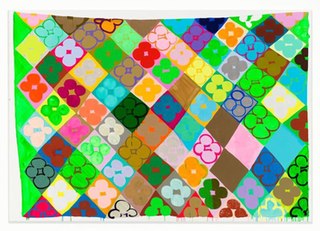
Judy Ledgerwood is an American abstract painter and educator, who has been based in Chicago. Her work confronts fundamental, historical and contemporary issues in abstract painting within a largely high-modernist vocabulary that she often complicates and subverts. Ledgerwood stages traditionally feminine-coded elements—cosmetic and décor-related colors, references to ornamental and craft traditions—on a scale associated with so-called "heroic" abstraction; critics suggest her work enacts an upending or "domestication" of modernist male authority that opens the tradition to allusions to female sexuality, design, glamour and pop culture. Critic John Yau writes, "In Ledgerwood’s paintings the viewer encounters elements of humor, instances of surprise, celebrations of female sexuality, forms of vulgar tactility, and intense and unpredictable combinations of color. There is nothing formulaic about her approach."
Gregory de la Haba is an American interdisciplinary artist, writer, curator and cultural producer. His work explores themes of addiction, contemporary notions of masculinity and duende.
References
- ↑ "Casper Brindle and the Expressive Power of Color". Whitehot Magazine of Contemporary Art. Retrieved 2018-07-12.
- ↑ "Casper Brindle: Recent Paintings". Artweek.LA. June 18, 2012.
- ↑ Weinstein, Alex (June 2011). "The Trajectory of His Path". The Surfer's Journal. 20 (3) – via issu.
- 1 2 "Casper Brindle: Aura & Strata". Whitehot Magazine of Contemporary Art. Retrieved 2018-07-12.
- ↑ Roth, David (June 5, 2017). "Casper Brindle at Nancy Toomey". Square Cylinder.
- ↑ "Visual Art Source". www.visualartsource.com. Retrieved 2018-07-12.
- ↑ "Innovative Detail: The Superdesk at the Barbarian Group Office". www.architectmagazine.com. Retrieved 2018-07-12.
- ↑ "Casper Brindle: Exhibitions". Artslant.
- ↑ Shana Nys Dambrot (August 2014). "The Artists of the Film MANA". White Hot Magazine.
- ↑ Rondinella, Luigi (June 4, 2015). "California dreaming. A Napoli, tra surf e arte". Artribune.